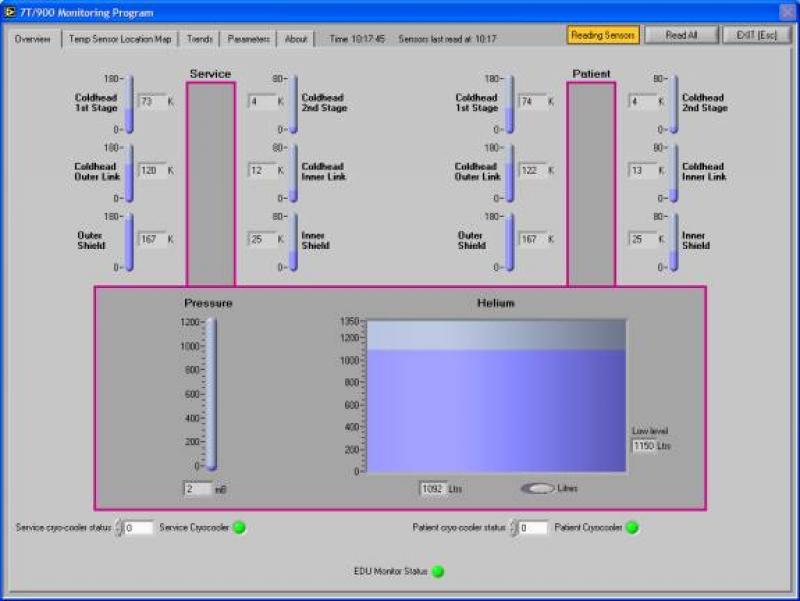
Our LabVIEW programmers have supplied a monitoring and data logging program to Magnex Scientific Ltd (Yarnton, Oxfordshire) for their new range of horizontal bore superconducting nuclear magnetic resonance magnets.
These systems are cooled by 2 closed-cycle coolers. A drop in cooling efficiency, for whatever reason, can cause increased loss of Helium which will eventually cause the magnet to warm up to the point where it loses its superconducting characteristic and becomes “resistive”. This in turn causes a “quench” where many thousands of pounds worth of liquid helium are spontaneously evaporated and the magnet completely loses its field. In order to avoid this scenario, key physical parameters of the magnet are constantly monitored. These parameters comprise 16 temperatures, helium volume, helium pressure, correct functioning of various electrical parts of the system and cryocooler parameters such as water temperature and motor temperature. If any of these parameters go outside normal limits, an alarm is generated and sent by email and SMS text message to a number of recipients. While an alarm is active, magnet data is also sent by email every hour. Armed with this information, Magnex staff can diagnose the problem and instruct a local engineer to fix it before the magnet (eventually) quenches.
Both long term data (every 8 hours) and a rolling buffer of short term data (every 2 seconds) are logged by the software.
